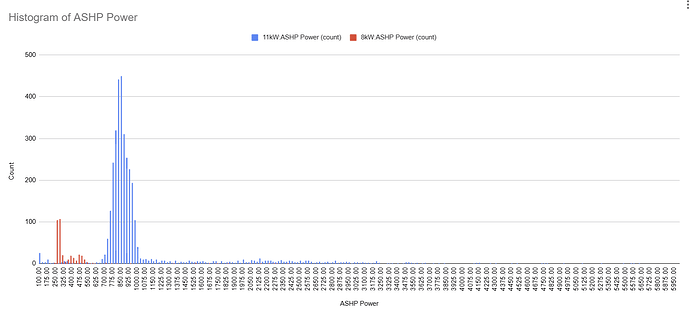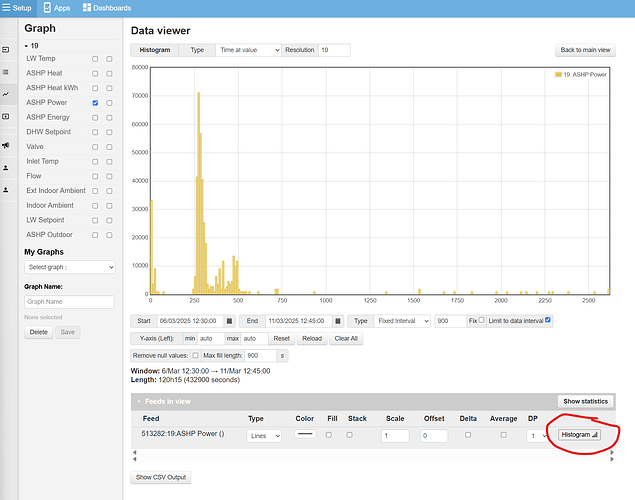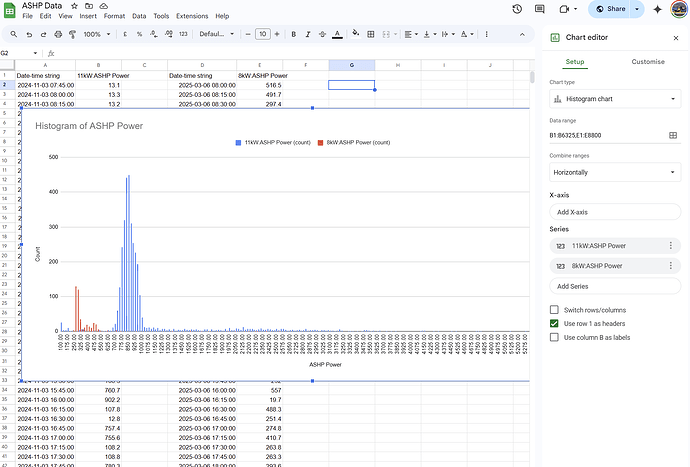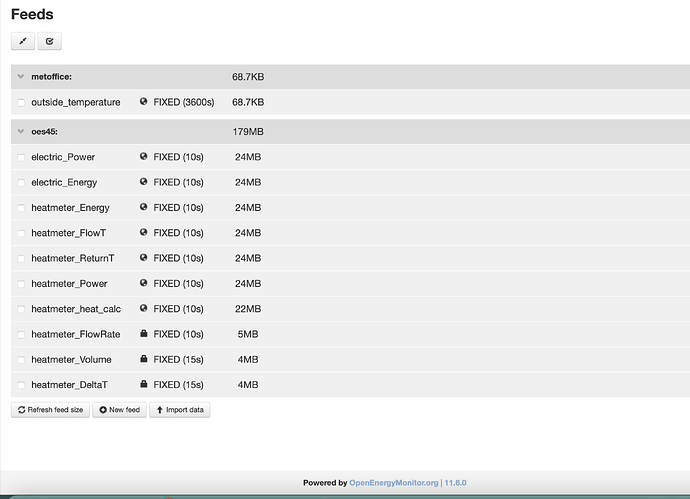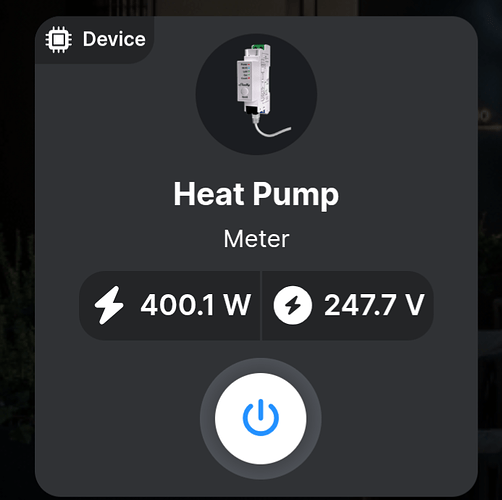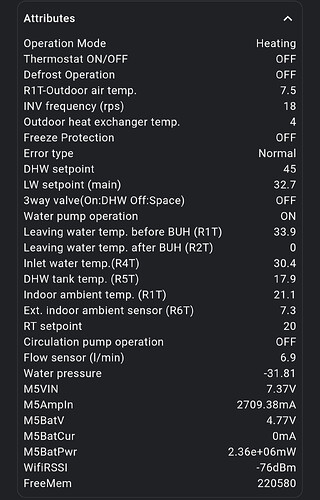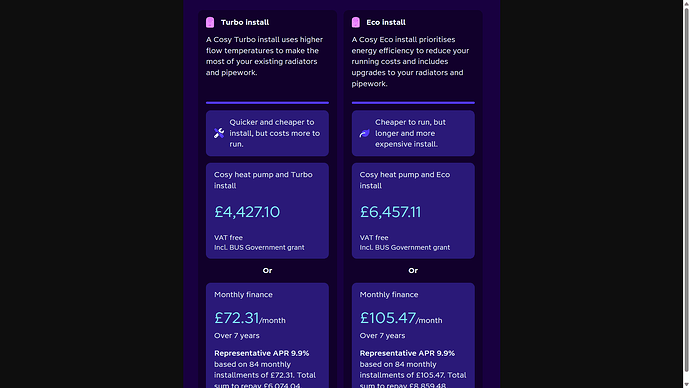Very limited data set so far over very different time periods and weather conditions but…
Looks promising! Remarkable difference if that’s anything to go on.
Could you tell me why the swap is happening? Is there an issue with the 9Kw unit?
I helped a friend with an Octopus installation offer. They initially suggested a 16Kw system but it turns out they had major errors with their heat loss calculations. In the end he had the 9Kw system installed so I am hoping there is not an issue with it.
main reason was it was oversized for the heat loss in my home ,
The 11kW was oversized for my house. The heat loss algorithm in use just didn’t work well for my house, a 3 bed semi, ~100m², 1920s solid stone wall house.
The 11kW couldn’t operate low enough to match the heat loss of the house, it would always generate more heat than the house was losing except when outside temperatures were at or below freezing.
For my install, the issue was that we were very early on as far as Octopus’s installations go and the heat loss calcs were somewhat enthusiastic. Our system was planned before the 8kW units became available too and no one had other 9kW’s installed so public performance data wasn’t widely available and the challenges those units present weren’t understood - end result is we ended up having a 9kW installed as it would meet the house’s figures.
On the positive, it works and works well. The house is warm and it costs less than our oil boiler used to. However, we now know that it’s oversized; can’t modulate performance down low enough to satisfy house heat demands and cycles more than necessary - all meaning that it’s essentially costing more to run than a smaller unit would.
The basic issue around sizing these units seems to be that Daikin make two hardware versions; low capacity, used for 4, 6 & 8 kW models and high capacity which is the 9, 11 & 16kW units.
The 4-8kW units can modulate power consumption down to 250/300w or so with corresponding reduction in heat output and the 9-16kW’s manage about 950w. Get the sizing wrong and fit a 9-16 rather than 4-8, and you get the various issues we’ve all reported.
For your friend, worth keeping in mind that the 9, 11 & 16kW units all share the same hardware and lower end performance characteristics so a 16kW can modulate down to the same level as a 9kW. Nothing much to gain from fitting a 9 vs 16 other than limiting the higher output level it can achieve.
Just to sum up, our 9kW’s being replaced on Friday with an 8kW. As 8’s weren’t available when our system was installed, we’ve agreed to pay for the cost of the heat pump itself and Octopus are covering the install costs.
This is exactly what I’m experiencing with my 9kw Daikin. Heat punk estimates circa 5-6kw heat loss but I’d like the 8kw so it has additional overhead but can modulate down to the same minimum as the 6kw. During the January cold snap when it averaged -4 degrees overnight and -5.9 at the coldest point the heat loss was ~5kw.
I believe the root cause having spoken to Octopus is assumptions / default air change rates which don’t reflect reality.
That’s exactly the sort of performance that prompted me to kick the conversations back into gear. We’re having an 8kW fitted Friday to replace our 9. Could probably get away with a 6kW but the headroom seems sensible as a safety net if nothing else.
That graph looks like it’s come out of Home Assistant (is that right?), if so, how did you produce it?
Thanks that is a very useful clarification.
Its actually from Emoncms - site home
and then the CSV imported into Google sheets as two data series , one for the 11kW (pre swap date) and one for the 8kW (post swap date).
Well, guess the swap’s on then.
Replacement 8kW was supposed to be delivered Thursday but apparently the logistics team were doing another drop nearby so thought they’d drop it off today. Glad I was in…!
Looking at inputs on the screenshot, you appear to have a lot more than me.
I have the emonscms HP, do you have a different version or paid for more feeds?
My electrical input power is coming from a Shelly CT clamp on the heat pump electrical feed.
Which goes via Home assistant, where I also collect data from ESPAltherma.
So I created feeds for the Home assistant data I wanted to see in emoncms/heat pump monitor.
I could for example, add feeds for my solar inverter or just about any other sensor I want to visualise in emoncms.
If you’re using the standard OEM Heat Pump monitoring equipment, those are the feeds it provides. Many people are using non-OEM instrumentation I.e. ESPAltherma, a microcontroller wired into the HP, or a similar device wired into the MMI interface feed P1/P2. These provide lots of internal HP data from its own sensors. You could use both OEM and one of those if you liked.
